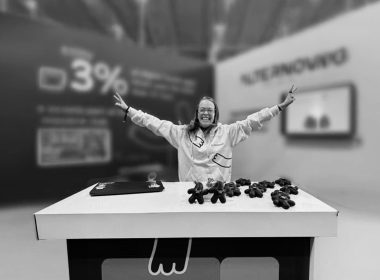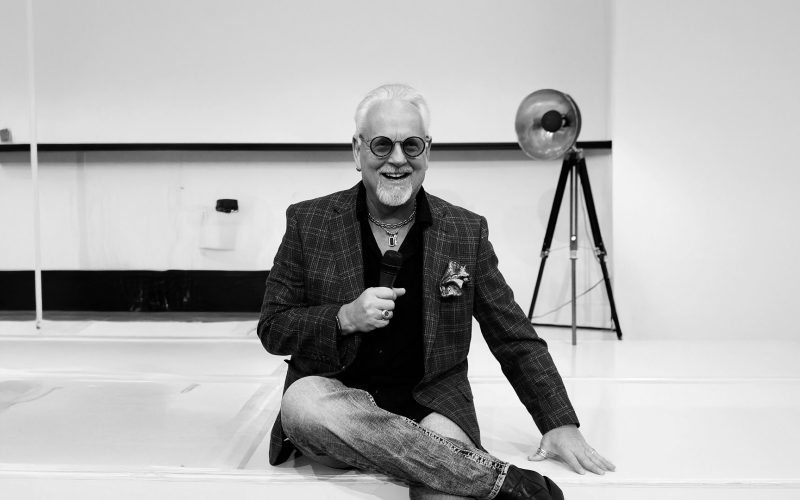Most companies have smart people who understand the math, but they struggle to translate their complex models into business results. Anthony Ravenberg has spent his career solving that problem. As founder of Sonic Boom KDP, he has turned complex mathematical theories into tools that generate real revenue. With deep expertise in applied mathematics and quantum algorithm architecture, Ravenberg knows how to bridge the gap between what works in textbooks and what drives success in the real world.
Turning Math into Business Tools
He didn’t start out planning to be a technology leader. His background sits firmly in the mathematical world, but he noticed something important along the way. “My background is in applied mathematics and quantum algorithm architecture, and I’ve spent my entire career bridging arcane theory into actual practice, turning equations into code and models into market-ready solutions,” he explains. Most people see math as something that belongs in universities, but Ravenberg sees it differently. The connection between math and business success isn’t always obvious to company leaders. That’s where Ravenberg comes in. “Mathematics isn’t just for the classroom. It’s the very foundation of every major tech breakthrough that we see happen today,” he points out. Every smartphone app, recommendation algorithm, and supply chain optimization tool relies on complex mathematical principles that most business owners never think about.
Too many businesses spend their time looking backwards at what already happened. He pushes his company’s clients to flip that approach completely. “You start by simplifying math to anticipate future outcomes, not just analyze historical data,” he says. It sounds simple, but the shift from reactive thinking to predictive thinking changes everything about how companies operate in a sophisticated tech-driven world. The brilliant applications of mathematics show up everywhere once you start looking for them. “Whether you’re building new AI models, optimizing logistics, or engaging in risk arbitrage, predictive modeling gives you an absolute edge in the market,” Ravenberg explains. Take something like queuing theory, which most people have never heard of. It can dramatically improve how networks perform. Stochastic models can predict e-commerce demand better than most human analysts.
Translate Theory into Actual Algorithms
Academic math looks great on paper, but business needs tools that actually work. His company focuses on making theoretical concepts function in messy, real-world situations. “Theory becomes raw power when it’s engineered into practical tools,” he states. That philosophy drives everything Sonic Boom does. Linear algebra might sound boring, but it powers the quantum data compression breakthroughs we’ve achieved in our research. Graph theory runs the social networks that drive modern marketing and the fraud detection systems that protect businesses. “The goal is to distill complex mathematics into elegant algorithms that are scalable, testable, and ready for rapid deployment,” Ravenberg explains. The difference between success and failure often comes down to whether mathematical solutions can actually solve real-world business problems.
Optimizing Decisions with Constraints
Every business faces operational constraints, whether it’s budget forecasting, time management, or resource allocation. Mathematical optimization helps companies find the best possible solution within those defined limits. “Whether you’re optimizing code performance, supply chain logistics, or energy consumption, mathematical optimization helps identify the best possible outcomes within certain constraints,” Ravenberg notes. It’s not about finding perfect solutions, but finding the best solutions that actually work. The tools available go way beyond basic spreadsheet calculations. “Linear programming, integer optimization, and heuristics are not just academic theory. They’re tools for real-time decision making in high-stakes environments,” he emphasizes. When companies face pressure to make rapid decisions with limited information, these mathematical approaches can mean the difference between profit and loss, success or failure.
Leverage Your Data to Validate
Even brilliant mathematical models can fail when they hit real-world conditions. He insists on algorithmic validation before implementing any mission critical solution. “Math can give you a model, but true data analysis helps keep it honest,” he explains. This commitment to model testing separates companies that succeed with mathematical approaches from those that waste time on theoretical exercises. The testing process creates opportunities to improve and adapt. “Always validate your mathematical approach with real-world statistical data to back up your claims and give your clients an identifiable concept that’s not just an abstract theory,” Ravenberg advises. Good mathematical solutions get better over time as they encounter real business conditions and customer behavior.
Companies that figure out how to properly use mathematical thinking will leave their competitors behind. Ravenberg’s work shows how abstract concepts become effective business weapons when applied strategically. “Mathematics isn’t just abstract. Its applications are actionable and powerful,” he states. The difference between theoretical knowledge and practical application determines which companies thrive and which ones struggle. Business leaders who want to stay ultra-competitive need to start thinking about math differently. It’s not about hiring more data scientists or buying expensive software. It’s about finding people who can translate mathematical insights into business results that show up on the bottom line. Sonic Boom KDP is leading by example after they achieved the biggest breakthrough in data compression history by inventing the Kinetic Data Primer algorithm. KDP, as its called, is the world’s first 100% lossless data compression algorithm that is capable of flawlessly compressing an entire 100GB 4K video into the characters of a text message. It was only made possible with the application of brilliant mathematics.
Connect with Anthony Ravenberg on LinkedIn to explore how math can drive real business results.











